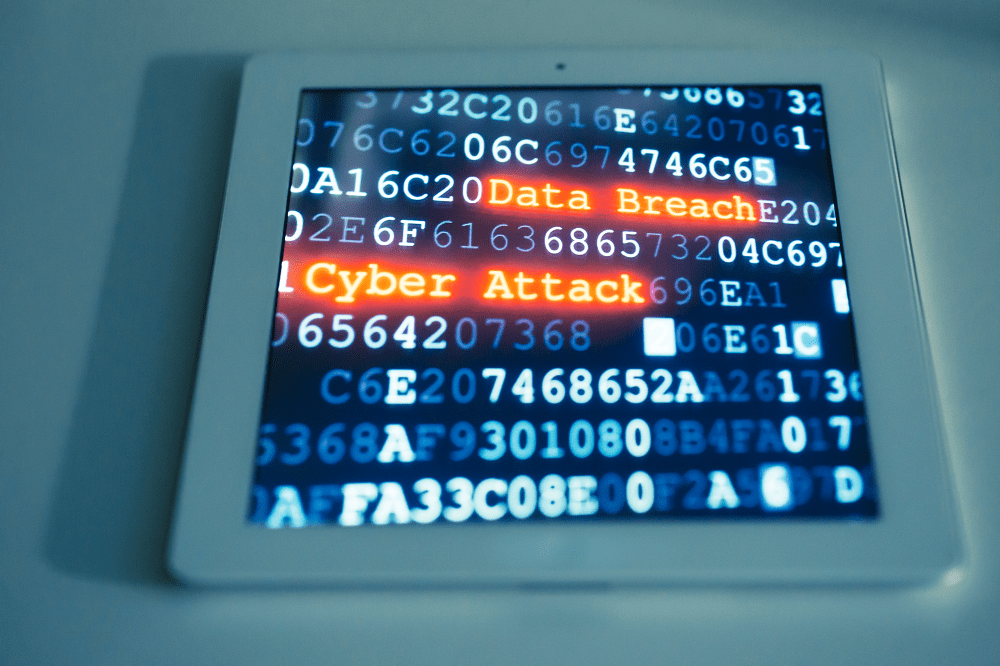What Is Infrastructure Monitoring? How Does It Prevent Cyber Attacks?
Is the constant news coverage of the most recent cyber attack making you wonder what you can do to prevent criminals from accessing your private customer and business information? Have you recently been the victim of such an attack? Are you worried that your business could be next?
We understand your concerns and - even better - we can help!
In the past 40 years, Kelser Corporation, an IT managed services provider (MSP), has helped small- to medium-sized businesses (SMBs) just like yours enhance their cybersecurity posture.
As a cybersecurity professional at Kelser Corporation, I follow cybersecurity developments daily. I’ve specialized in cybersecurity for nearly two decades and in this article, I’ll explain why infrastructure monitoring should be a key part of your cybersecurity plan and how it can proactively help prevent cyber attacks.
What Is Infrastructure Monitoring? (3 Types)
Within your IT environment, different types of monitoring work together to keep your network safe. Three main types of infrastructure monitoring are:
1. Host Monitoring
Host monitoring provides data about what’s going on with each individual computer, including laptops, desktops, and servers. Antivirus software is a very simple example of host monitoring.
You want to understand the performance, stability, and overall health of individual pieces of hardware and host monitoring makes that possible.
2. Network Monitoring
At the network level, you want to monitor and watch the traffic between devices and the messages being sent from your network out to the internet.
Where is the traffic going between devices? What traffic is going from your network outside to the internet? Are there systems talking to each other that shouldn’t be?
For example, network monitoring may indicate that a particular desktop is communicating with a video camera for the closed-circuit television monitoring system on your network. It may all be on the same network, so someone might think it’s fine, but should everyone be able to do that? Probably not.
Network monitoring also provides performance data. It’s important to know how much memory is being used and how much is free at any given time. How much traffic is there? How fast is it being sent? Are there processes that are running in the background that are using large amounts of memory or disk or central processing unit (CPU) space?
Firewalls are an example of network monitoring.
3. System Monitoring
System monitoring often catches unusual activity that may indicate either a performance or security issue. This is often handled via a remote monitoring and management (RMM) tool.
Good system monitoring should answer the following questions: Are all of the systems online that should be? Are they running as efficiently or effectively as they can?
Effective systems monitoring should proactively detect when a server has a lot of things running, or a lot of memory is being used in one place and things are running slow. Maybe we should take a look at this before our customers call us to let us know that things aren’t working the way they should.
When systems are running slower than they should be, this information can indicate that an app is not running the way it should and needs some sort of fix or adjustment to achieve optimal performance.
Or, something more sinister may be going on and your system could be running something that shouldn’t be there at all.
System monitoring can provide answers to questions like:
-
-
- Is this malware?
- Has there been a breach?
- Has our system been hacked?
- Is there something running here that we don't want?
-
Top-notch system monitoring via RMM software enables monitoring and patching to update critical security and performance issues proactively before they hit your network, and before users identify a problem and feel the pain. In the optimal situation, this should be totally transparent to the user.
3 Ways To Be Proactive
So often, I hear people asking what they can do after a security breach. After a breach, the damage is done and while there are steps you can take to mitigate further damage, my advice is always to prepare before the breach!
How do you do that? Here are three basic elements critical to any cybersecurity posture:
1. Perimeter Defense
Firewalls are the most common form of perimeter defense. Think back to Biology class. In the same way cell membranes are semi-permeable barriers and gatekeepers in the human body (allowing certain molecules into a cell and blocking others) a firewall performs a similar function for your IT network.
Firewalls are getting better all the time. Many of them can not only detect a malicious IP address, but they can actually inspect the content of items coming into and going out of your network.
They can detect if a system in your network has been compromised, if your internet traffic is being rerouted to a suspicious place or if a remote system is sending commands to get your network to act on its behalf. All of these may indicate that your network has been compromised.
They assess when something doesn’t look right and immediately block it.
The lifespan of most firewalls is three to five years, so if yours is older than that, it might be time for an update.
Other forms of perimeter defense include VPN servers and web proxies.
2. Antivirus Software
Antivirus software is one of the cheapest and most basic investments you can make in your IT infrastructure. It can monitor what’s going on in any given piece of computer hardware from laptops to desktops to servers.
The good news is that antivirus software now comes standard with most operating systems and all you need to do is turn it on.
Any piece of hardware that can run antivirus hardware should have it installed and running.
The only time it might not be possible to run antivirus software is if you use a high-performance computing system that runs very complicated, very powerful algorithms. The antivirus would choke up too many resources from the system and make it impossible to do the kind of quality of work that is required.
3. Employee Training
Employees are your first line of defense. They are your biggest cybersecurity opportunity. By presenting regular cybersecurity training, the topic will stay top of mind.
Alerting employees to the terms and techniques of phishing, social engineering, ransomware attacks, and other threats will enhance the security posture of your IT infrastructure.
Make sure you have policies and procedures in place and that every employee understands their role in keeping information protected. One employee writing down their passwords on sticky notes taped to their computer or keyboard can compromise your entire IT network.
Continuous Monitoring Helps Identify Emerging Threats
Now that you know a few of the basic elements of strong cybersecurity infrastructure, don’t make the common mistake of sitting back and breathing a sigh of relief.
I’ve seen many companies assume that once they implement a security framework like NIST 800-171, their job is done. Nothing could be further from the truth.
Ted Demopoulos, a well-known information security expert with more than 25 years in the industry, has said: “Prevention is ideal, but detection is a must.”
Only through continuous monitoring and updating, or what we in the IT world call “defense-in-depth,” can your IT infrastructure keep pace with the constantly changing threats in the cyber landscape.
By collecting and reviewing information about what is going on in your IT environment, you have early notice of anything strange ranging from performance issues to odd behavior, slow processing to security-related issues.
Ready To Explore Ways To Incorporate Monitoring and Proactivity In Your IT Infrastructure?
Not only does your infrastructure need to be monitored and updated regularly, but the IT solutions also need to be tweaked and adjusted to meet the risks and tolerance needs of your organization appropriately.
For example, the CIA might want to be alerted after three unsuccessful login attempts into certain systems. But for a huge company with a lot of employees and few security risks, that would be overkill.
It’s important to customize IT solutions to address the nuances of your environment. If you are unnecessarily flagging too many things and getting alerts every single time a user logs in or out, an actual incident may get lost in the noise. But if someone has failed to log in 200 times in the last 10 minutes, that might be worth investigating.
Without detection and monitoring, you have no record of what’s going on inside your network or on your individual systems. You can’t protect against the threats you don’t see.
MSPs, like Kelser, can provide customers with an extra set of expert eyes to look at the effectiveness of their network’s cybersecurity and performance parameters. We’ve worked with SMBs to enhance their networks, ensuring they have the strength and security they need to meet their business goals.



